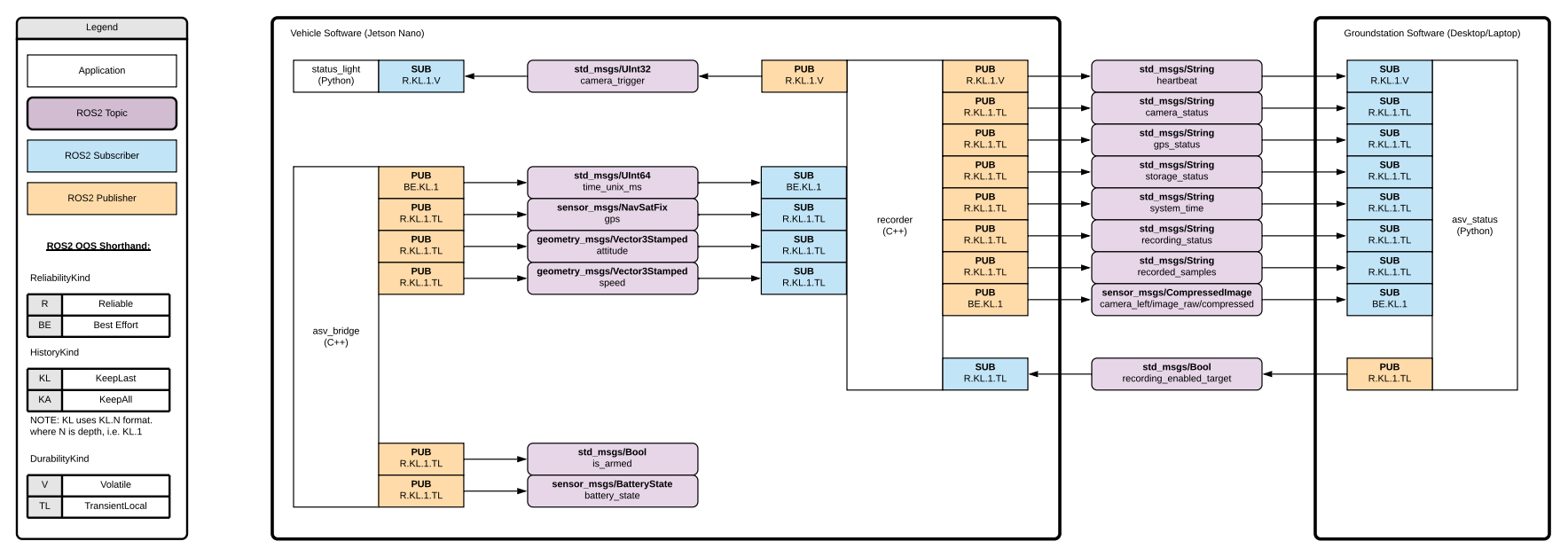The Aqualink ASV is an open-source reference design for an autonomous surface vehicle. Included in this project are all hardware & electronics designs, software components, and instructions necessary to outfit a generic boat hull to navigate autonomously and collect camera and sensor data.
This project is designed around a collection of existing software projects, such as ROS2, Ardupilot, QGroundControl, and more. All hardware components are off-the-shelf with links to suppliers within the included Bill of Materials document. The construction process has been tailored to require no soldering and minimal, standard tools.
The project is split into three main folders, each with their own setup guides:
groundstation/: Contains setup instructions and software that will be run on a Linux laptop used to control the vehicle.hardware/: Contains all drawings & CAD (electrical and mechanical), assembly instructions and photos, and the bill of materials.vehicle/: Contains setup instructions and software for both the Nvidia Jetson Nano and Rambutan OpenWRT router that are installed in the vehicle electronics box.
While there is a great deal of flexibility in which order to read and follow the instructions, the order we recommend is:
- Review all materials in
hardware/to get an understanding of how everything fits together: - Acquire all components, as specified by the BOM and your own project's requirements
- Before assembling the hardware, set up the Nano and Rambutan router. These steps are easier pre-assembly:
- Follow the instructions and drawings in the Hardware Setup to assemble the electronics and battery enclosures
- Integrate the electronics and battery enclosures, motors, sensors, etc. into your vehicle hull
- With the vehicle fully assembled, perform the Pixhawk Setup
- At this point, your vehicle should be fully assembled, calibrated, and ready to deploy.
Here is an image that shows the way all of the nodes connect together via ROS2 topics:
For more information on each software node, see:
